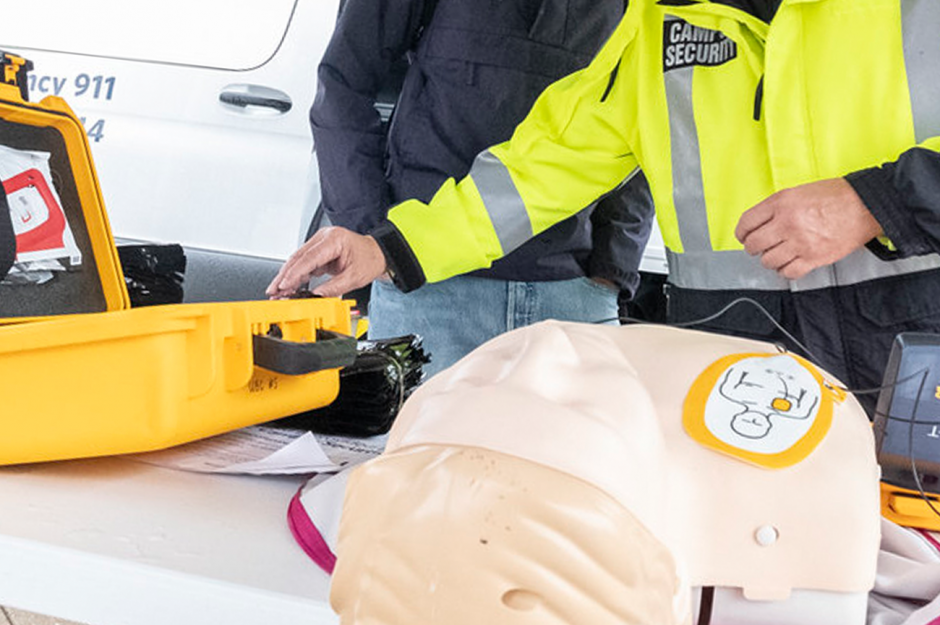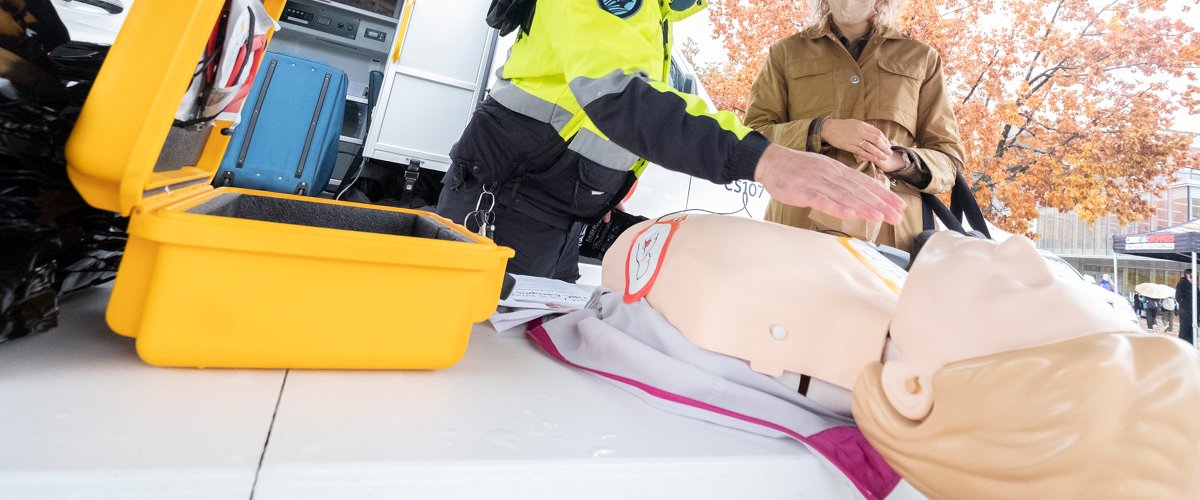Automated External Defibrillators (AEDs) are available across university campus to provide quick response in the event of a cardiac arrest.
An AED is a portable unit that provides a life-saving shock to a person in sudden cardiac arrest, when the heart unexpectedly and abruptly stops beating. This is usually caused by an abnormal heart rhythm called ventricular fibrillation. Once applied, the AED analyzes a patient’s heart activity and determines if a lifesaving shock is required. The AED cannot deliver a shock unless the person is in cardiac arrest.
Defibrillators cannot do harm
AEDs are critical in emergencies and are easy to operate.
Once activated, the device provides easy-to-follow voice instructions and automatically determines if someone requires a life-saving shock.
Defibrillators cannot do harm, and will only deliver a life-saving shock if it is required in the case of cardiac arrest.

How do you use an AED?
- Turn on the AED and listen to voice prompts for instructions.
- Remove clothing from chest
- Stick electrode pads to bare chest.
- Once you have the pads on, stand back from the patient while the AED decides whether a shock is needed.
- Continue to follow the voice prompts.
Where are AEDs located on the Vancouver campus?
AEDs are available at a number of publicly accessible buildings across the UBC Vancouver campus. The portable AED devices are located in a white cabinet with an AED sign above the unit.
In the event of an emergency when a defibrillator is required, 9-1-1 dispatchers can also provide direction to the nearest AED.

